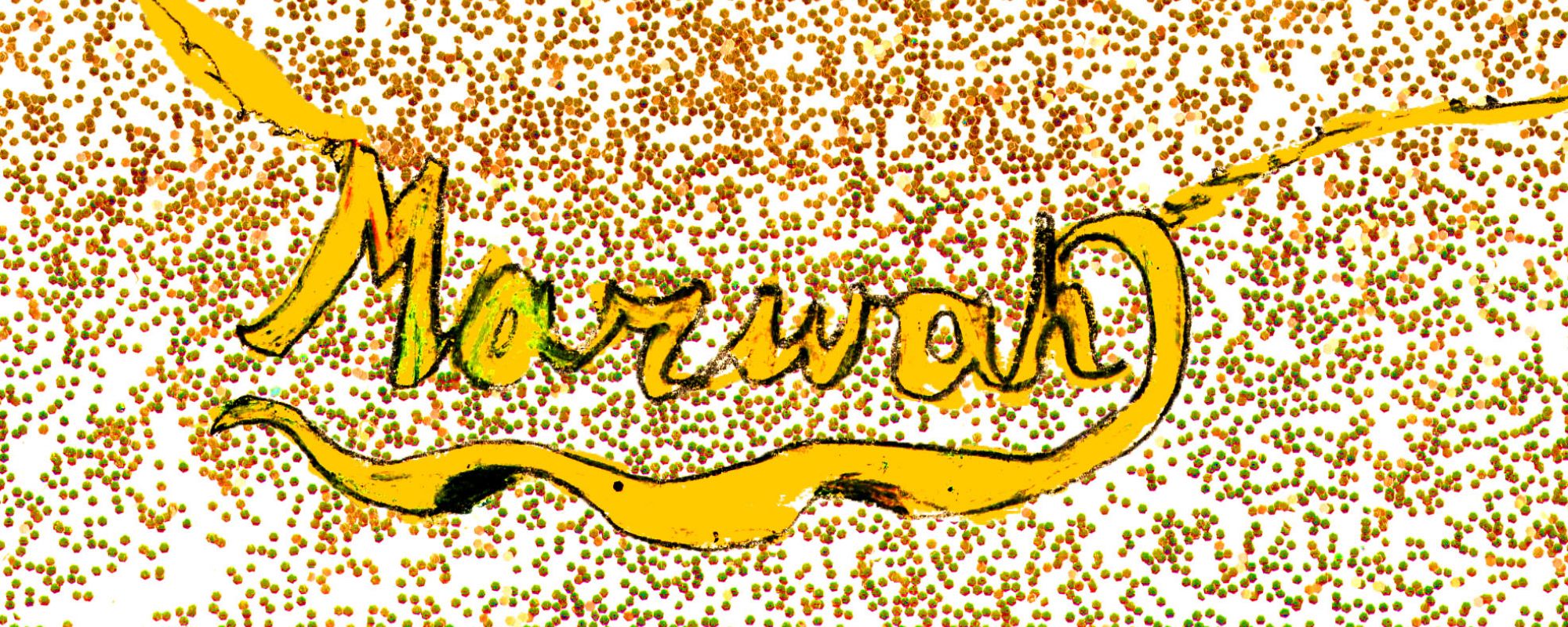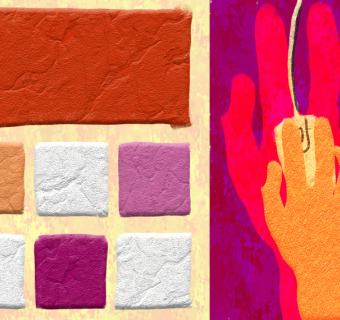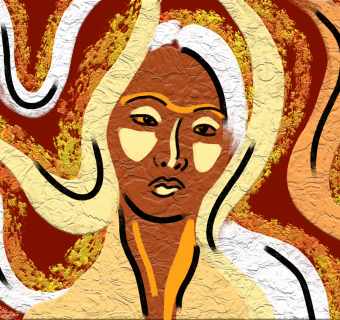I wear my gold nameplate necklace every day. It has a constant, reassuring presence on my body. Below my throat and above my heart. When I feel overwhelmed or nervous, it becomes a place to rest my hands, a touchstone to recenter myself. When I order coffee, I hold it out as I spell my name.
As an accessory, my necklace is not particularly unique. It isn’t even very specific to me--countless girls have similar pieces, around their necks or on their dressers. They are visible and hidden, against skin and beneath headscarves. They can be intricate or simple, in English script or in Hindi, Urdu, Arabic, Bengali. They are not hard to come by. The value, for me, is largely sentimental. My necklace was a gift from my father’s two sisters, a commendation for successfully being born. I have owned it since I was four months old, and it, along with several other pieces of gold jewelry, is one of the few things I still possess from that period in my life, those inaugural days of personhood.
For brown women, each gold ornament carries its own biography of transition and growth. As we age, our jewelry evolves with us. When an item has served its purpose, it can be reincarnated, melted down and hammered into new shapes. It can be preserved or passed on, perhaps adorning a whole lineage of women.
The induction into this sorority of sona begins early. Little brown girls have their ears pierced when they are too young to remember the pain. Pendants, engraved with prayers, are pinned to their baby blankets by vigilant mothers, wary of the evil eye. Asli sona, real gold, is given to them for all of the big events which seem closer together in that stage of life: birthdays and first days of kindergarten. Religious holidays and middle-school graduations. I can remember being nine years old, sitting in front of a mirror before the wedding of a cousin, looking at my reflection, my chubby face and eyebrows that were beginning to join in the middle, waiting for my mother to fasten the clasp of my favorite necklace.
For brown women, each gold ornament carries its own biography of transition and growth. As we age, our jewelry evolves with us.
Weddings, for my family and many others, are brilliant celebrations, draped in silk and infused with gold. This is particularly true of the bride, who, for the occasion, might have two dozen new pieces made. The most important of these are the matrimonial bracelets, which vary in number but are almost always gold and almost always a fixture on the arms of married brown women.
The clinks and clatters of those bracelets form the soundtrack by which I remember time spent with my mother and grandmothers. Each wave and gesture, each movement, has its own set of notes. Hello sounds different from goodbye. A hug is quieter than a handshake. The women of my family count years by the gold on their wrists. This one for the birth of a child, the building of a new house. This one for Independence. An album of their longevity.
My paternal grandmother has a particularly impressive set of gold bracelets. They are heavy and wide, engraved at intervals with thin lines.They are loud, sliding back and forth on her arms when she speaks or eats or combs her hair. Her presence, in general, is a loud one. She tells stories often and in great detail. Until recently, she spent hours every day talking to her husband of seventy years, who rarely responded but always listened.
My grandfather died earlier this year. He was always a quiet person, a stoic figure sitting beside by grandmother in family photos with his arms crossed. I like to think that her noisiness and his silence made for a lifetime of balance, an auditory symbiosis. When I was six years old, he and she gave me my own gold bracelets, a thin pair I have since had made into one.
A phone conversation with my grandmother, soon after the funeral, sounded “off” to me, hollow, as if she were speaking from a tunnel. After a moment, I realized that the sound of her bracelets, the uneven symphony of gold against gold as she moved her hands, so prominent and so familiar to me, was missing.
Gold is a keeper of memories for brown women. Each piece of jewelry is an encapsulation of another instance of change gone right: a risky investment that paid off, a difficult illness which was overcome. It feels dissonant from death.
My grandmother’s collection of gold jewelry, amassed over ninety years, tells stories of a life spent as half of a pair. Her wedding bracelets have outlasted the union they were meant to commemorate. Even as they are returned to her body, they will be colored differently than they were before, shaped by a different set of memories.
My collection is sparse, its story yet unwritten. There is no cohesion to it, no reason to believe it will ever amount to anything of consequence. And yet, on even the most uneventful, uninspiring days, when I see my necklace in the mirror, the reflected affirmation of my identity, I feel momentarily connected. To her, to him. To a heritage of beauty and complexity, the pain and pleasure of being a brown woman. And I am prompted to go on, curious about what is to come.







